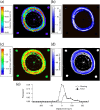Towards portable MRI in the plant sciences
- PMID: 38369530
- PMCID: PMC10874549
- DOI: 10.1186/s13007-024-01152-z
Towards portable MRI in the plant sciences
Abstract
Plant physiology and structure are constantly changing according to internal and external factors. The study of plant water dynamics can give information on these changes, as they are linked to numerous plant functions. Currently, most of the methods used to study plant water dynamics are either invasive, destructive, or not easily accessible. Portable magnetic resonance imaging (MRI) is a field undergoing rapid expansion and which presents substantial advantages in the plant sciences. MRI permits the non-invasive study of plant water content, flow, structure, stress response, and other physiological processes, as a multitude of information can be obtained using the method, and portable devices make it possible to take these measurements in situ, in a plant's natural environment. In this work, we review the use of such devices applied to plants in climate chambers, greenhouses or in their natural environments. We also compare the use of portable MRI to other methods to obtain the same information and outline its advantages and disadvantages.
Keywords: Cavitation; Flow; Low-field NMR; Plant physiology; Relaxation times; Structure; Water.
© 2024. The Author(s).
Conflict of interest statement
The authors declare that they have no competing interests.
Figures





References
-
- Schulze ED, Beck E, Buchmann N, Clemens S, Müller-Hohenstein K, Scherer-Lorenzen M. Water deficiency (Drought) In: Schulze ED, Beck E, Buchmann N, Clemens S, Müller-Hohenstein K, Scherer-Lorenzen M, editors. Plant ecology. Berlin: Springer, Berlin Heidelberg; 2019. pp. 165–202.
-
- Kamal T, Cheng S, Khan IA, Nawab K, Zhang T, Song Y, et al. Potential uses of LF-NMR and MRI in the study of water dynamics and quality measurement of fruits and vegetables. J Food Process Preserv. 2019;43(11):e14202. doi: 10.1111/jfpp.14202. - DOI
-
- Van As H. Intact plant MRI for the study of cell water relations, membrane permeability, cell-to-cell and long distance water transport. J Exp Bot. 2007;58(4):743–756. - PubMed
Publication types
Grants and funding
LinkOut - more resources
Full Text Sources

